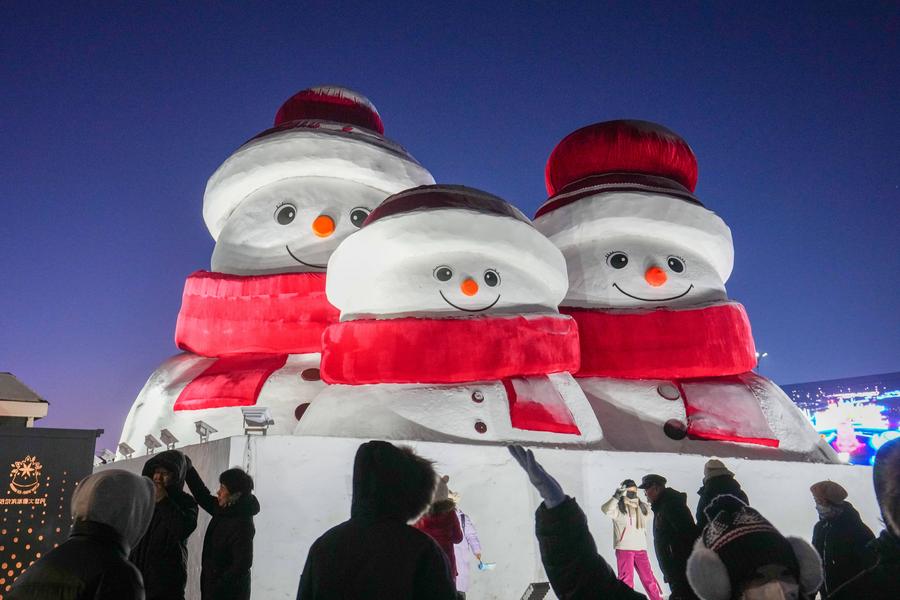
Tourists take photos at a snow sculpture near the Harbin Ice-Snow World in Harbin, Northeast China's Heilongjiang province, Jan 5, 2025. [Photo/Xinhua]
Renowned worldwide for its unique ice and snow culture, Harbin, capital city of Northeast China's Heilongjiang province, attracts a multitude of visitors every year to its ice and snow world, with the biggest draw being the spectacular ice sculptures.
Between late December and February, the streets, parks and squares in the city are transformed into magnificent stages for fantastic ice and snow sculptures of people, legendary figures, animals and abstract patterns.
These creations not only demonstrate the exquisite skills of the people of Harbin, but also convey their aspirations and pursuit of a better life.
The origin of Harbin's ice sculptures can be traced back to the 1960s, when a group of local artists and enthusiasts, who were passionate about ice and snow art, began harvesting ice from the frozen Songhua River and crafted detailed and beautiful winter masterpieces.
After decades of development and evolution, Harbin's ice sculptures have become the jewel in the crown of Chinese ice and snow culture, serving as an indispensable cultural emblem of the city. Meanwhile, the ice sculptors have developed a unique skill set and style through practice and experimentation. They use high-quality natural ice blocks, and employ techniques, such as carving, polishing and coloring, to transform them into exquisite works of art.
During the production process, ice sculptors, who master a rich set of carving techniques and a knowledge of color coordination, can adeptly utilize various carving tools to sculpt ice into different shapes and patterns. Their color coordination techniques make these works even more vivid and realistic.
Harbin's ice sculptures hold significant cultural value, reflecting various aspects of the history, culture and folklore of the northeastern region. Furthermore, the sculptures serve as a bridge for cultural exchanges between China and the world. During the season, the city has held a series of events to promote winter tourism. In addition to the Harbin Ice and Snow World, many other winter-themed attractions have been established to entice visitors.
Wearing a red scarf, a red hat and a smiling face, a giant snowman had been erected in the Qunli Music Park.
At the Sophia Square, and on Central Street, 10 adorable penguins from Harbin Polarpark have waddled to greet tourists.
At the Sun Island scenic area, an imposing 20-meter-tall snow sculpture featuring Sun Wukong, the Monkey King, has debuted at the 37th Harbin Sun Island International Snow Sculpture Art Expo.
Contact the writers at zhouhuiying@chinadaily.com.cn